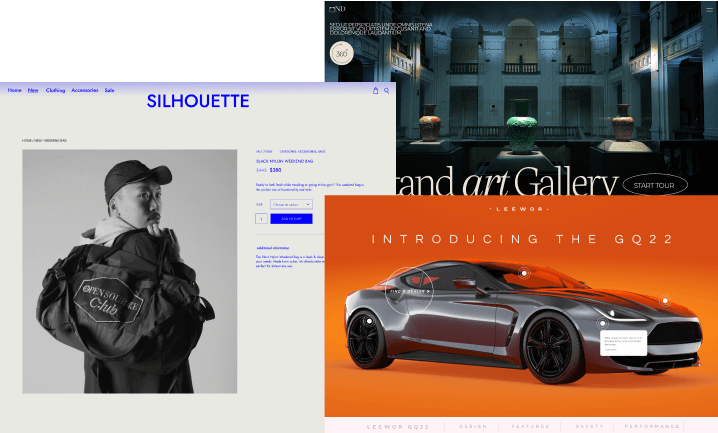Website Animations make sites come alive and delight users. If done correctly, they can enhance the overall user experience. Also, animations show site visitors your website’s information and help them better understand how your site works.
Why Use Website Animation?
Animations make websites come alive. If done correctly, they can turn a website into a delightful user experience. Unfortunately, animation misuse can create discord, chaos, and confusion. It can alienate rather than attract visitors and keep them engaged long enough to generate leads.
Animations have several roles, including:
1. Creating fluidity: Typically, clicking a link or button on a website instantly opens a form, page, or whatever it was meant to open. Additionally, animations can create a pop-up or slide-in transition so that users can see the next item appear. This is particularly useful for sites with a tabbed-based interface.
2. Providing context: If your site is content-heavy and requires users to scroll down to see more, animations sliding upwards on a page can hint that they need to do so.
3. Give feedback: Animations can be handy if you have many interactive elements on your site. For instance, you can animate a button when a user hovers over it to signal clickability. Or, if a user is filling in a form, you can highlight where they are typing. Besides making it more browser-friendly, it indicates how they interact with your site.
4. Tell a story: You can use animations if your website is complex, and you want to give visitors a tutorial on how to use them. Also, use animations for comic relief during errors (404), notifications, or any other purpose.
5. Indicate progress: Use animation to show a progression on your site, such as making a bar loading in real-time.
Animation Web Design Principles
To create the effect you want, be aware of why each animation exits. Otherwise, your site will come out looking like a ridiculous animated movie. Without going into detail, some best practices to follow are:
- Stretch and Squash
- Appeal
- Anticipation
- Exaggeration
- Timing
- Staging
- Arc
- Solid Drawing
- Overlapping Action & Follow Through
- Straight Ahead Action and Pose to Pose
- Slow in and Slow out
- Secondary Action
What Not to Do When Adding Web Animations
Some tips on what not to do when adding animations to your site:
- Don’t make animations too slow or fast, causing frustration and confusion.
- Use quick animations when action is expected, such as users clicking a button or link expecting a prompt response.
- Don’t add flashy animations needlessly, such as bright colors and weird shapes that look out of place or childish.
- Don’t add animations that overuse resources like RAM and processing power, causing your site to load slowly.
- Don’t use animations that aren’t useful on your website, or it will negatively impact the user experience.




